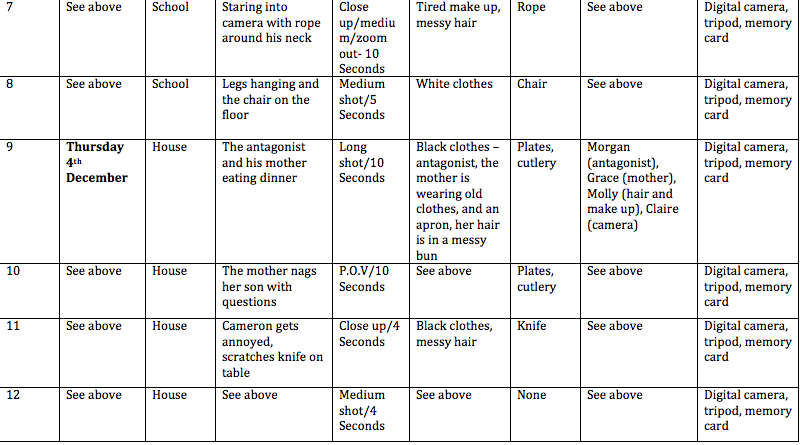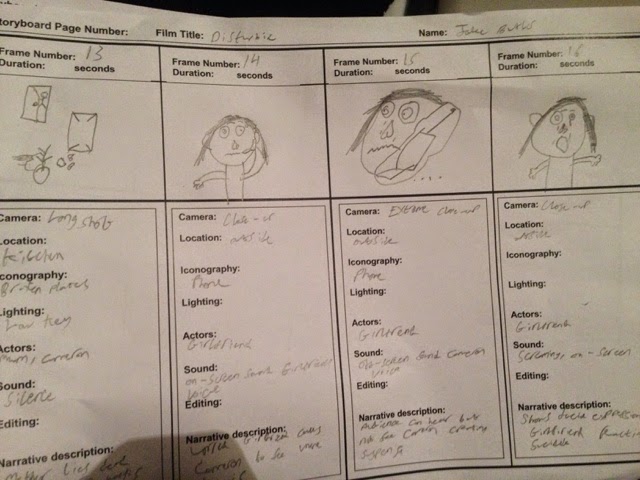When creating a film, many roles are included as well as actors that take place behind the scenes. All people involved in the film are assigned their own role and credited in the film. It is essential to have directors, actors, producers and people behind the scene to contribute towards the film.
In our group, the following roles are as follows
Producers- Go Butson
Director - Molly, Claire
Actors - Morgan, Jake, Molly, Grace
Director of photography- Claire
Music producers- All
Screenplay writer- Jake
MES co-ordinator- Jake
Editors- Molly
We all played a part in producing and worked together as a group to create things such as the storyboards and posts, molly and claire were the directors as they previously filmed a production at GCSE, whilst I opted to create a magazine instead.
Morgan is the main character and antagonist and while my group had to re-film I had to cover for him, molly features as his girlfriend while grace plays the mother. Claire was made director of photography as she previously took this as a GCSE subject. We all helped in chosing and producing the music relevant to the scene as we used molly's computer to open editing to edit and compare the sounds. I was made screenplay writer as I was able to showcast my talents in this as I take A-level english langauge and achieved an A in GCSE. I was made MES co-ordinator for my previous work in media studies at GCSE. Molly is the main editor as the film and memory card is on her computer.
From working with claire, mainly in molly's absense, we were able to make very effective editing with sound and also some shots in the sequence. We agreed on most ideas together and it was fun working with her as we got a lot done when on a task alone together, and hopefully I can continue working with her more in the future.
I believe Molly voiced her opinion well with most topics and took a good stand on things, especially improvements to make and the overall editing and also she performed well in her acting role, however I tried to involve myself as best as I could within the group and felt I was often shut out, and from the beginning they did not need me to act nor change the plot, and although I enjoyed my roles as MES Co-ordinator, screenplay writer and sound editor, I wished she would've let me take part in more things in the group, that I hope will happen during the next group task we are given.
Overall I believe everyone contributed well in their role, they were chosen well and all for a reason, which is why everything has worked out effectively so far in our group and I enjoyed participating in the roles that I was given. I don't believe anything could've been done differently as everything has been effective and has played out well.



































